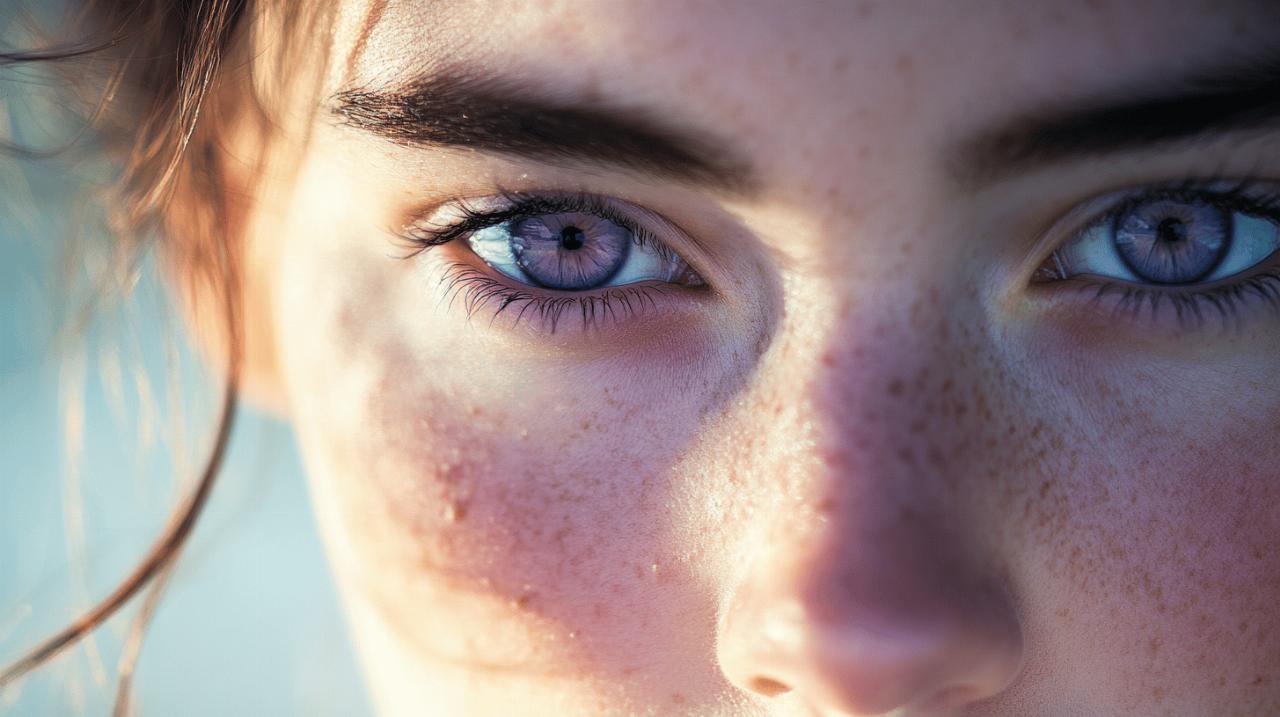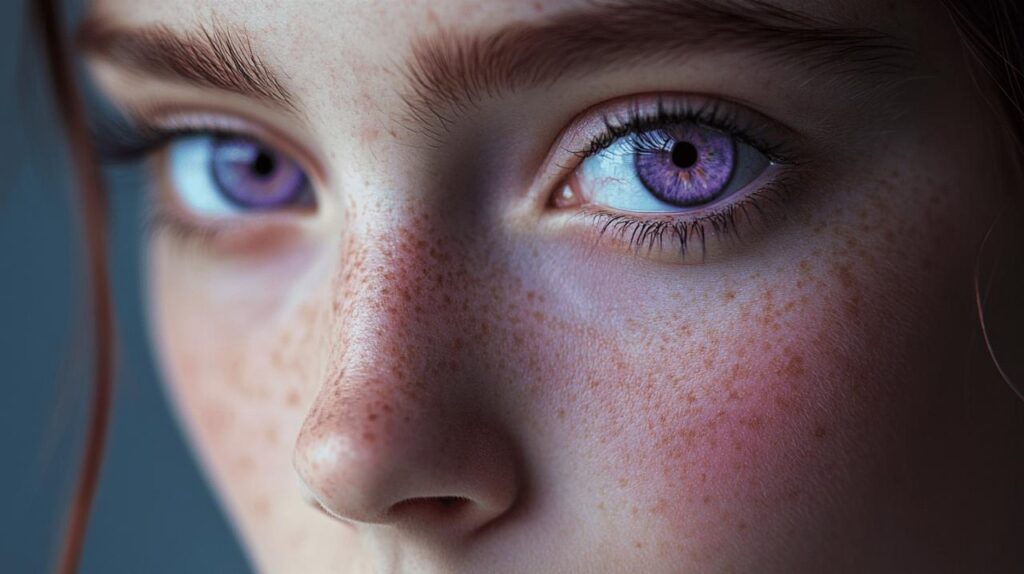The world of eye colour is a fascinating realm where genetics, light, and perception converge to create the spectrum of hues we observe in one another. Whilst brown, blue, green, and hazel are commonplace, the notion of violet eyes has long captivated the public imagination, often associated with rare beauty and mystery. Yet, as enchanting as the idea may be, the question remains: do violet eyes truly exist in nature, or are they merely a trick of the light?
The science behind eye colour: what causes violet eyes?
To understand the phenomenon of violet eyes, one must first grasp the fundamental mechanisms that determine eye colour. The iris, the coloured portion of the eye, owes its appearance to a pigment known as melanin. This same compound is responsible for the colouring of our skin and hair, and its concentration within the iris directly influences whether our eyes appear dark or light. Those with higher levels of melanin typically display brown or black eyes, whilst those with less melanin tend towards blue, green, or hazel tones.
Understanding Melanin and Its Role in Eye Pigmentation
Melanin operates as the primary architect of eye colour, yet its role is far more nuanced than a simple presence or absence. The way melanin is distributed within the layers of the iris, combined with the structural properties of the tissue itself, determines the final colour that meets the observer's gaze. Blue eyes, for instance, result not from a blue pigment but from the scattering of light in an iris with low melanin content. This scattering effect, similar to the way the sky appears blue, creates the illusion of colour. When melanin levels are exceedingly low and certain structural conditions align, the interplay of light refraction and underlying blood vessels can produce a hue that veers towards violet rather than pure blue.
Genetic Mutations and the Formation of Rare Eye Colours
Genetics orchestrates the entire symphony of eye colour determination, and it is a complex performance involving multiple genes working in concert. Whilst researchers once believed a single gene dictated eye colour, it is now understood that a team of genetic factors contributes to the final result. Occasionally, a mutation or rare combination of genetic variations can lead to an unusual distribution of melanin, yielding colours that deviate from the norm. Natural pigmentation can, under these extraordinary circumstances, produce what appears to be violet eyes, though such cases are exceptionally uncommon. These genetic quirks, coupled with the way light interacts with the iris, mean that true violet eyes are more of a whisper in the genetic code than a shout.
The elizabeth taylor effect: separating fact from fiction
Few names are as synonymous with violet eyes as Elizabeth Taylor, the legendary actress whose striking gaze became the stuff of Hollywood lore. For decades, admirers have debated whether her eyes were genuinely violet or simply an optical illusion enhanced by her surroundings. The truth, as it turns out, lies somewhere in between, illustrating the powerful influence of perception on how we interpret eye colour.
How lighting and perception influence eye colour appearance
The appearance of eye colour is far from static; it shifts and changes depending on a host of external factors. Lighting plays a starring role in this visual transformation. Under the bright, controlled conditions of a film set or the warm glow of stage lights, deep blue eyes can take on a decidedly violet cast. Similarly, the colours one wears can reflect onto the iris, subtly altering its perceived hue. Makeup, particularly eyeshadow and eyeliner, can further enhance or shift the appearance of eye colour, creating the illusion of shades that may not exist in their natural state. Elizabeth Taylor's eyes, often described as violet, were more accurately a deep, intense blue that appeared violet under specific lighting conditions and in conjunction with her choice of wardrobe and cosmetics.
The difference between true violet and deep blue eyes
Distinguishing between genuinely violet eyes and deep blue eyes that appear violet is a subtle art. True violet eyes would require an incredibly rare combination of low melanin and specific light-scattering properties, coupled with the visibility of underlying blood vessels that lend a reddish tone. This blend of factors is so uncommon that many experts question whether anyone possesses truly violet eyes in the strictest sense. What is often labelled as violet is, in reality, a very pale blue or grey-blue that, under certain conditions, takes on a purplish tinge. The line between these categories is blurred by the ever-changing nature of light and perception, making definitive categorisation a challenge even for specialists.
The reality of violet eyes: how common are they really?
 The allure of rare eye colours captivates both scientists and the general public, yet when it comes to violet eyes, the statistics paint a picture of extreme scarcity. Understanding just how uncommon these eyes are requires a look at the global distribution of eye colours and the factors that contribute to their rarity.
The allure of rare eye colours captivates both scientists and the general public, yet when it comes to violet eyes, the statistics paint a picture of extreme scarcity. Understanding just how uncommon these eyes are requires a look at the global distribution of eye colours and the factors that contribute to their rarity.
Global Frequency and Distribution of Natural Violet Eyes
Across the world, the vast majority of individuals possess brown eyes, a reflection of the higher melanin concentrations prevalent in many populations. Blue and green eyes, whilst less common, are still observed with relative frequency in certain regions, particularly in Europe. Green eyes, for instance, are found in only around two per cent of the global population, making them a rarity in their own right. Violet eyes, however, fall into an even more exclusive category, with their natural occurrence so infrequent that reliable statistics are virtually nonexistent. Amber eyes, red or pink eyes associated with albinism, and heterochromia, where an individual has different coloured eyes or spots of varying colour within a single iris, all rank among the rare eye colours, yet violet eyes may well be the rarest of all. The genetic lottery required to produce such a hue is so improbable that many people go their entire lives without encountering anyone with genuinely violet eyes.
Environmental and external factors that affect eye colour perception
Beyond the fixed genetic blueprint, environmental and external factors play a significant role in how eye colour is perceived. Lighting conditions, as previously noted, can dramatically alter the appearance of the iris, transforming a pale blue into a shade that seems to shimmer with violet undertones. Clothing choices, particularly garments in shades of purple or blue, can reflect colour onto the eye, enhancing the illusion. Makeup is another powerful tool, capable of accentuating or muting certain tones within the iris. Even the time of day and the quality of natural versus artificial light can shift the way we interpret eye colour. These variables mean that someone might appear to have violet eyes in one setting whilst their eyes look decidedly blue or grey in another, adding layers of complexity to the already intricate question of whether violet eyes truly exist.
Health considerations: when eye colour changes signal a problem
Whilst the natural variation in eye colour is largely benign and simply a reflection of genetic diversity, there are instances where changes in the appearance of the iris warrant closer attention. Understanding when a shift in eye colour might indicate an underlying health issue is essential for maintaining overall wellbeing.
Medical conditions that can alter iris appearance
Certain medical conditions can affect the iris, leading to changes in its colour or appearance. Uveitis, an inflammation of the middle layer of the eye, can cause the iris to take on an unusual hue or develop spots. Fuchs' heterochromic iridocyclitis, a chronic form of uveitis, is characterised by differences in iris colour between the two eyes and can be accompanied by other ocular symptoms. In some cases, trauma or injury to the eye can result in changes to pigmentation, as can certain medications or systemic diseases. Whilst these conditions are relatively rare, they underscore the importance of monitoring any unexpected alterations in eye colour, particularly if they occur suddenly or are accompanied by pain, vision changes, or other concerning symptoms.
When to seek professional advice about eye colour changes
For the most part, the subtle shifts in eye colour caused by lighting, clothing, or makeup are nothing to worry about. However, if you or a family member notice a sudden, unexplained change in eye colour, it is prudent to consult an optometrist or ophthalmologist. This is especially true if the change is accompanied by discomfort, redness, or visual disturbances. In children, any unusual eye colour variations should be evaluated by a medical professional to rule out conditions that might require treatment. Laser surgery and other interventions are sometimes considered for various eye health reasons, though these are typically unrelated to cosmetic changes in iris colour. By remaining vigilant and seeking advice when needed, individuals can ensure that their eyes remain healthy whilst still appreciating the fascinating spectrum of colours that nature and genetics bestow upon us.


